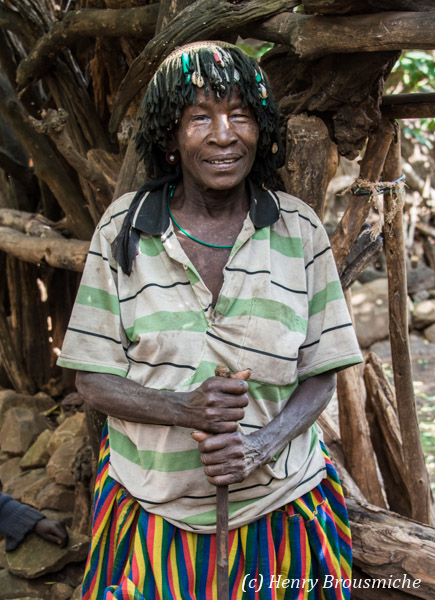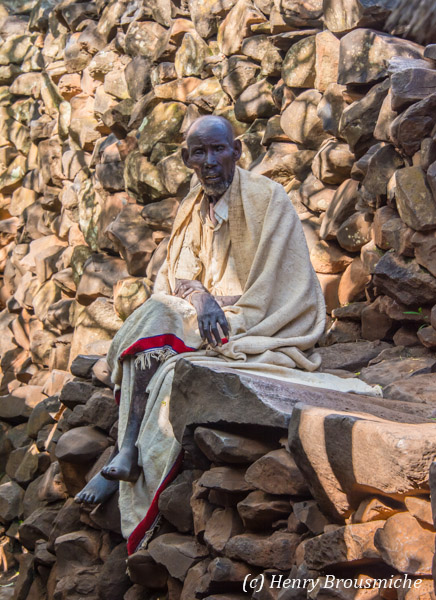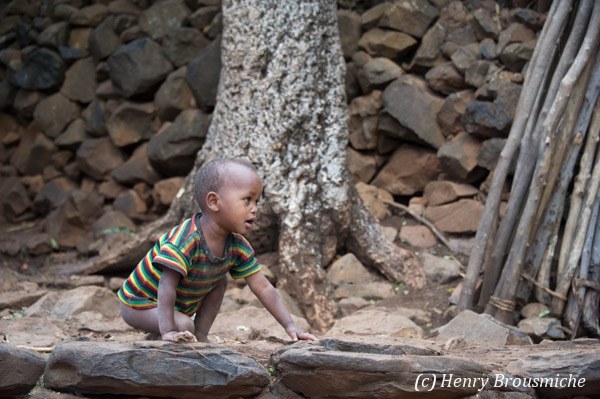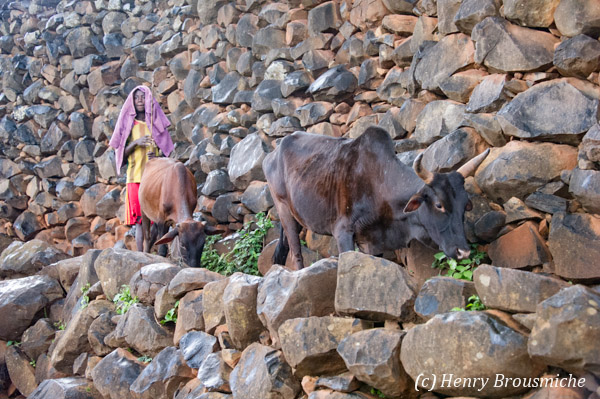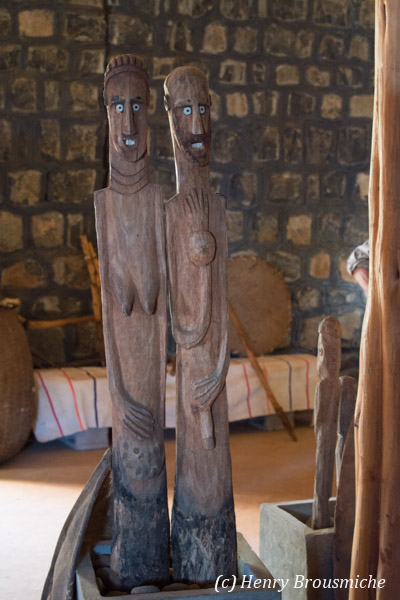Konso
The Konso people have little connection with their past and their history, and little is known about their country of origin or the time of their establishment in the region. Nevertheless, their family and cultural traditions tend to show that they stem from an amalgam of neighbouring Cushitic tribes.
The Konso are seasoned sedentary farmers, the only ones in south-west Ethiopia to indulge in the cultivation of cotton and millet terraces on the slopes of the rocky hills. The grains are ground by the women and then processed into patties, which are the basic food of the Konso. Each family has a few head of cattle and its own piece of land that men and women work together.
Although the traditional characteristics of the Konso are similar to the Cushitic cultures, their aesthetic canons, their crafts, the organization of their villages and their mode of farming differ. They possess a cultural, social and economic entity of their own and they speak Konsigna, a Cushitic language close to the Oromo languages.
The appearance of the konso villages differs from the villages of other ethnic groups in the region. To defend themselves from the attacks of wild animals and to protect themselves from the mudslides, the konsos encircle their villages with a rampart of basalt and dried earth 3 to 4 metres high. In the enclosure, the huts are so close together that their roofs sometimes overlap. The villages are densely populated and have an average population of 2,500 habitants.
A complex system of age classes governs the life of male Konso. In adolescence, young men enter the adult learning class; then they reach the class of warriors and landowners. Finally, in middle age, they accede to the superior position of the ancients. The teenagers leave the family home and gather for the night in the relative comfort of a large community shed built in the center of the village and open to the winds.
The transition to a higher class or marriage is celebrated by dances, songs and rituals well anchored in the konso culture.
